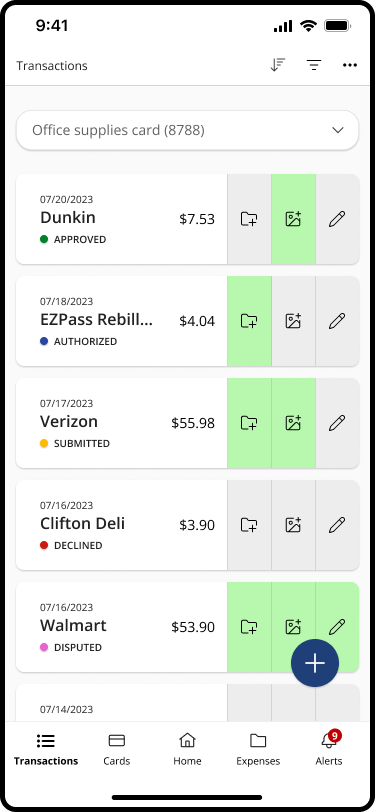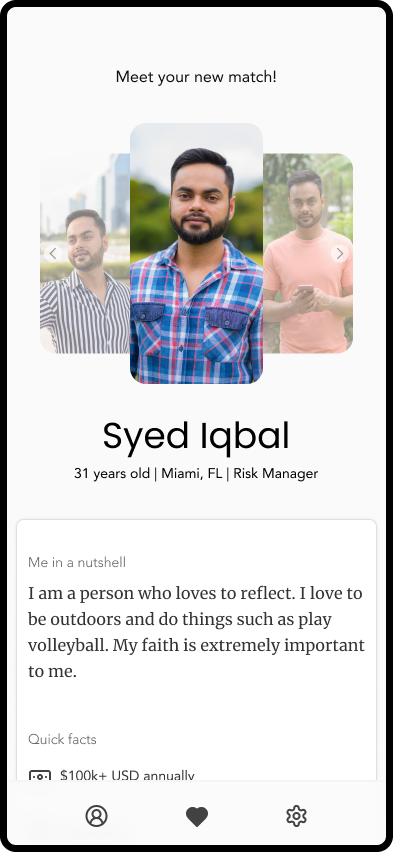Brick DeFi
Designing a fintech startup that enables aspiring business owners to crowdfund capital.
High Fidelity Mobile Designs
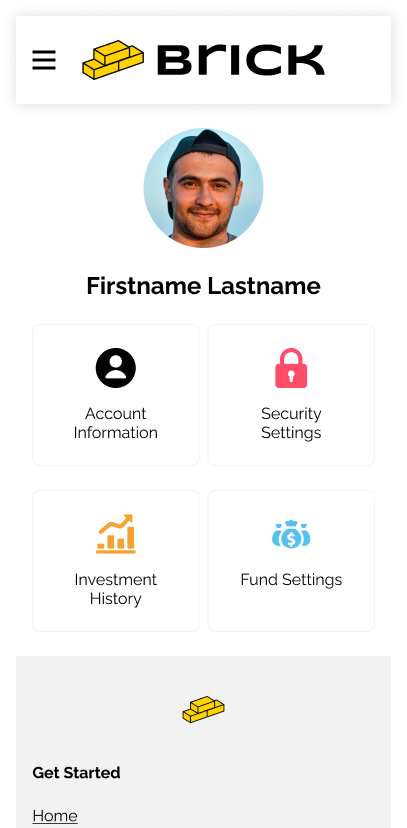
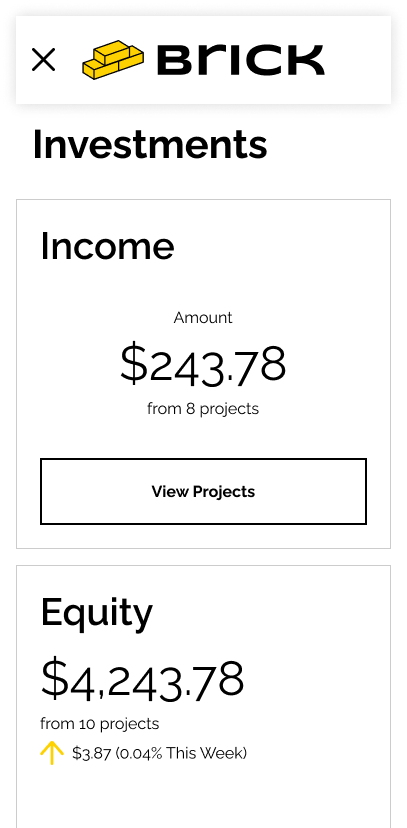
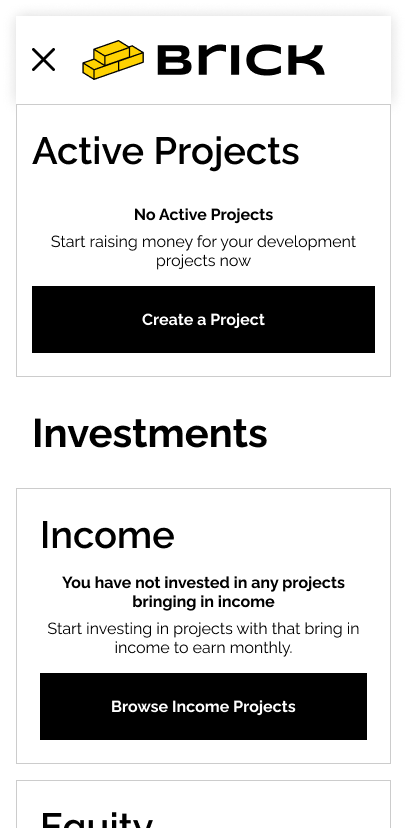
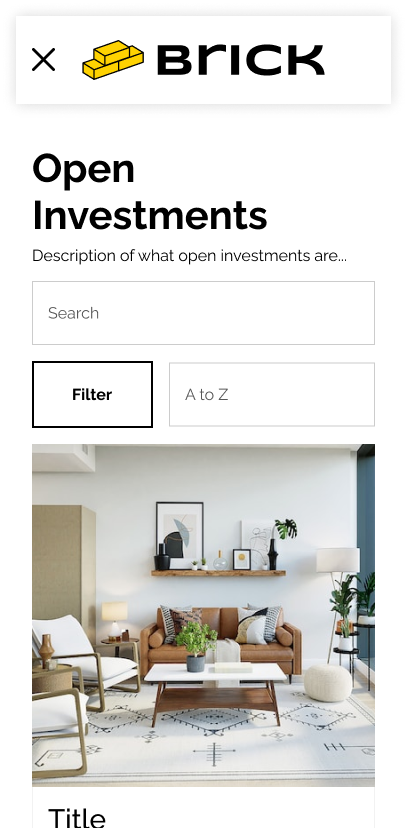
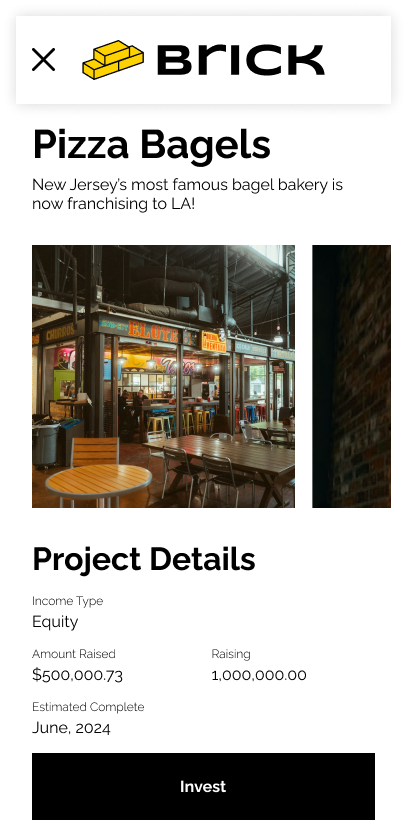
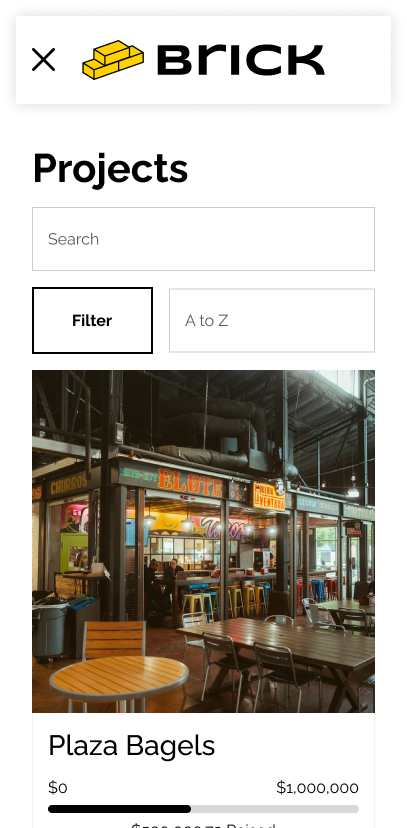

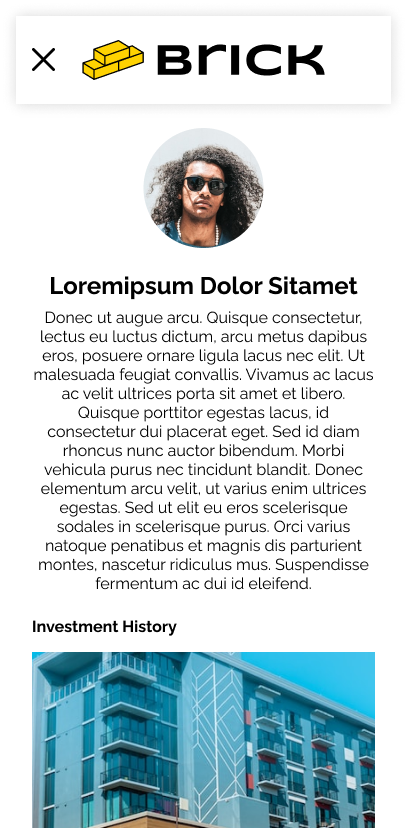

Project Summary
The problem
Aspiring small business owners have a very hard time raising enough capital to start their dream ventures. Most have to take large, risky loans from banks. We decided to make an alternative.
The product
Brick was a fintech startup that aimed to allow budding real estate developers to raise money to fund real estate projects via crowdfunding.
My role
UX/UI Designer
Our team
Lead Designer, UX/UI Designer, CEO, and CTO
Step 1
Establishing Proof of Concept
Brick’s initial plan was to crowdfund millions of dollars to buy a skyscraper in NYC and then share revenue from rent with the building’s investors.
I took this idea to potential users and solicited feedback.
Users were quick to point out that the idea was complex, impractical, and that it even reeked of a scam. However, users noted that the idea of raising money to buy real estate was interesting. A team member then said, "What about if we did this but for small businesses?"
We all had a kind of "eureka" moment, and I took this refined idea back to our users.
Bingo. This was an idea that our users said was practical, and I even got some potential investors to get pretty excited. This gave us the enthusiasm that we needed to move along.
Step 2
Research and Personas
It then came time for me to gain a thorough understanding of who our users were. This would enable us to understand which pain points we needed to address.
- I used surveys to understand our users at a broad level.
- I used focus groups and user interviews to understand our users at a more nuanced level and to dig into interesting findings.
This allowed me to make the following two personas.
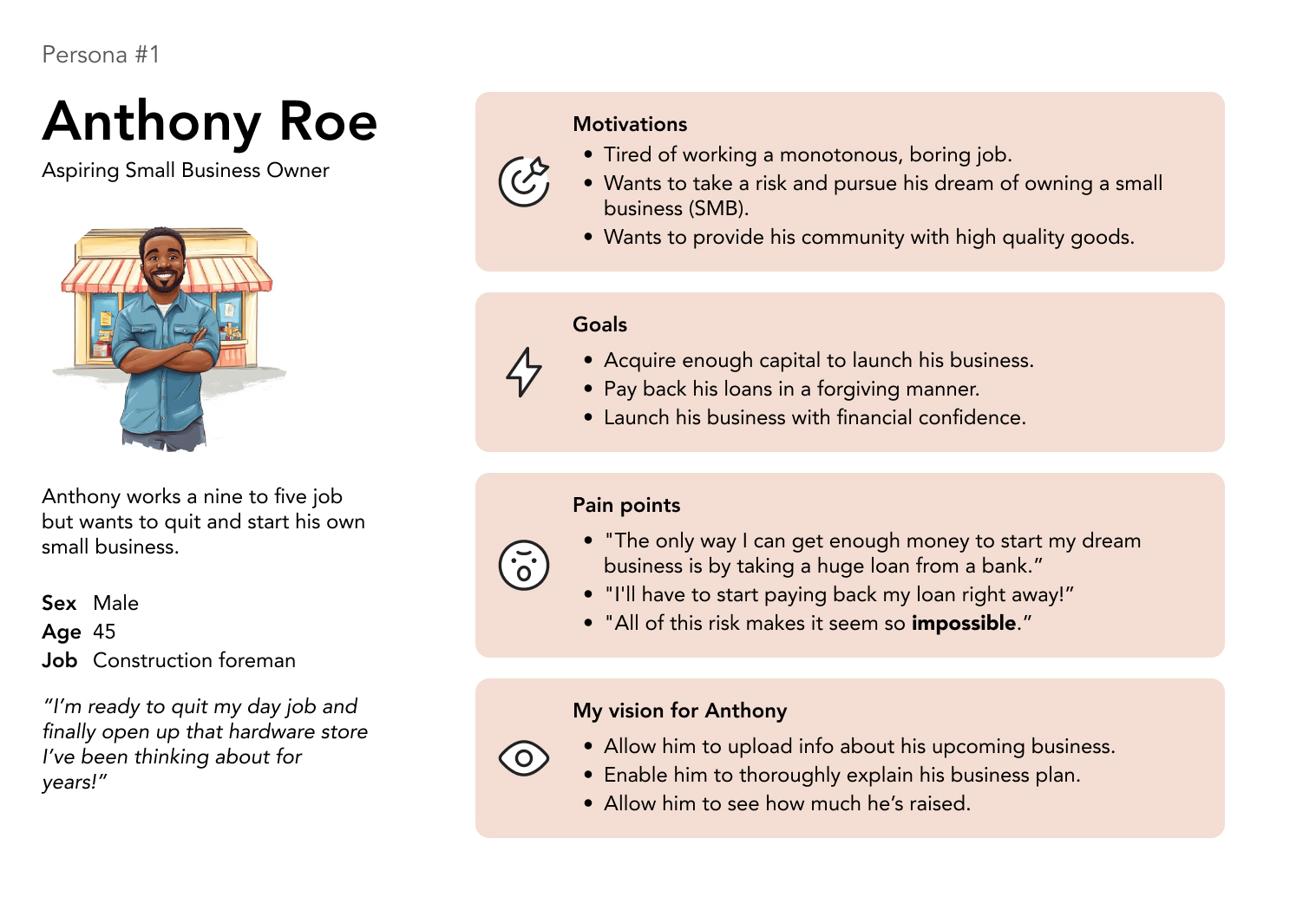
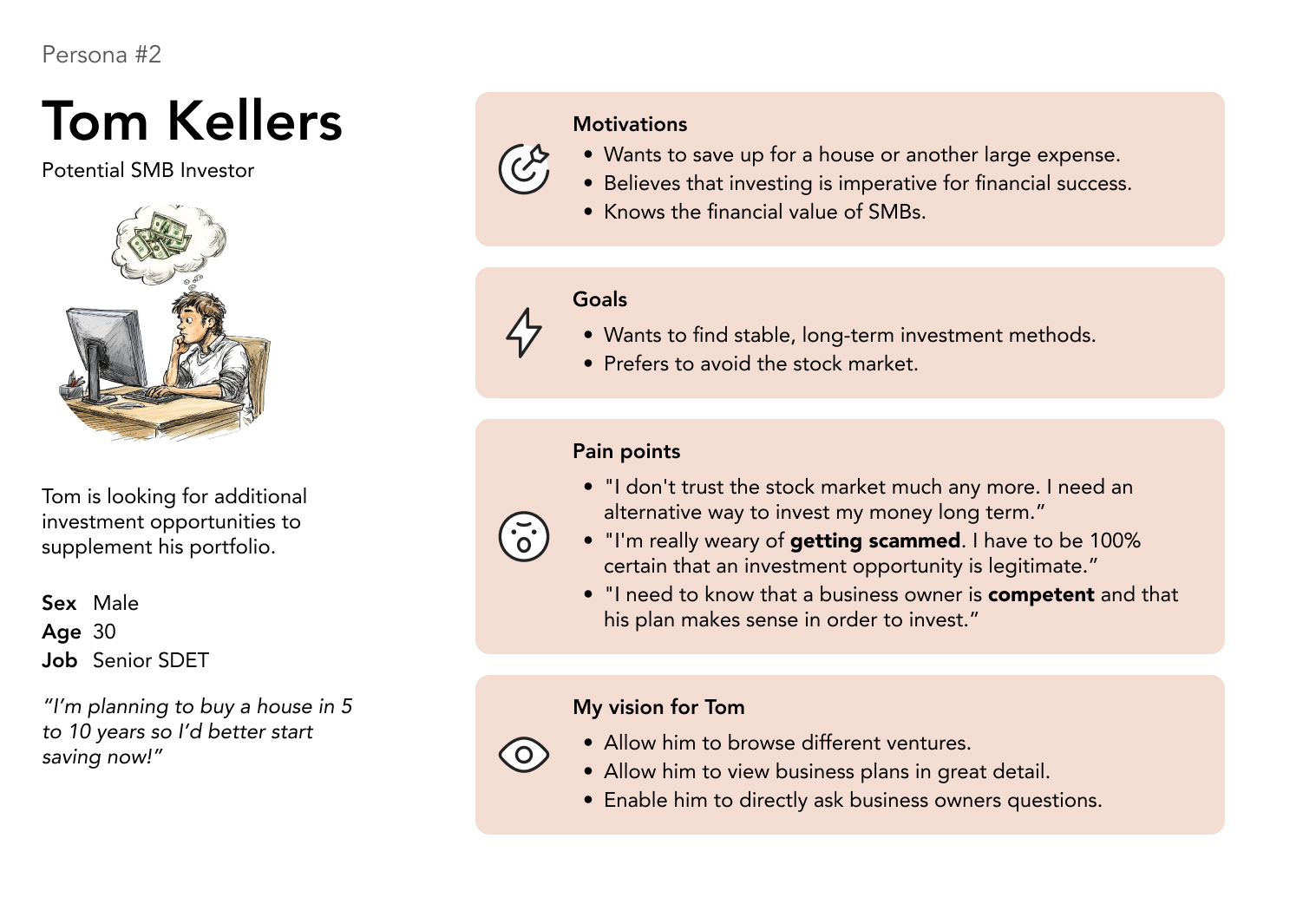
Step 3
Building Information Architecture
Now that our proof of concept had been validated, and we knew who our users were, it became time for me to make a fully detailed Information Architecture that captured all of our requirements. This process technically began during Step 2 but was further excelerated after I completed user research. I built our Information Architecture by
- Conducting user interviews with potential users
- Holding design brainstorming sessions with the team
- Conducting competitive analysis and searching for inspiration
This allowed us to keep track of all of our requirements and outline a very clear plan for our product within a manageable scope.
Step 4
Wireframing in Figma
By this point I knew that our product had a place in the market, I knew who our users were, and I had a detailed outline for our product. Thus it came time to begin wireframing, and I was able to wireframe in rapid time because I had carefully maintained our requirements. I used our personas to make the following designs based upon their needs.
Some examples of how I used our personas to inform design decisions include;
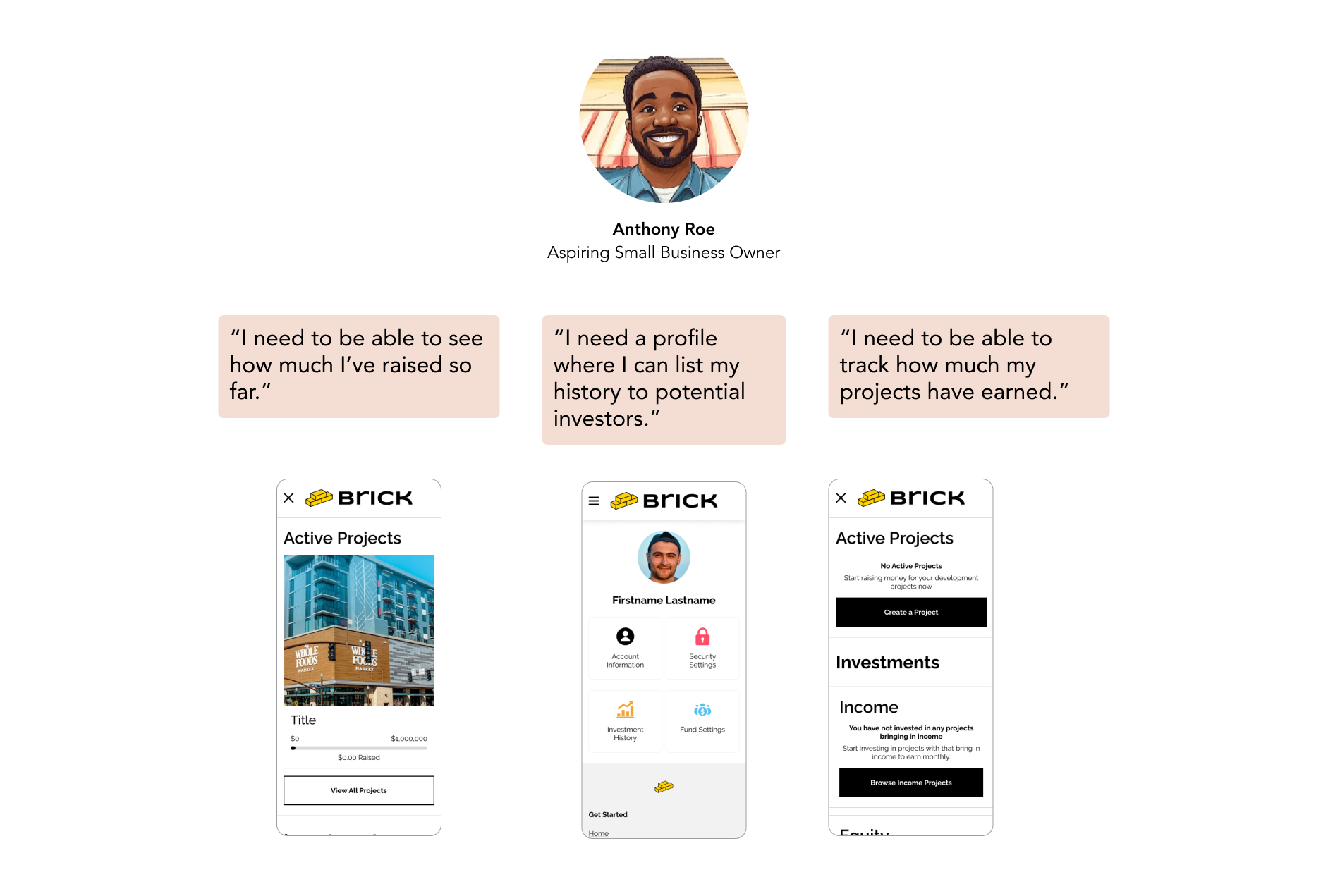
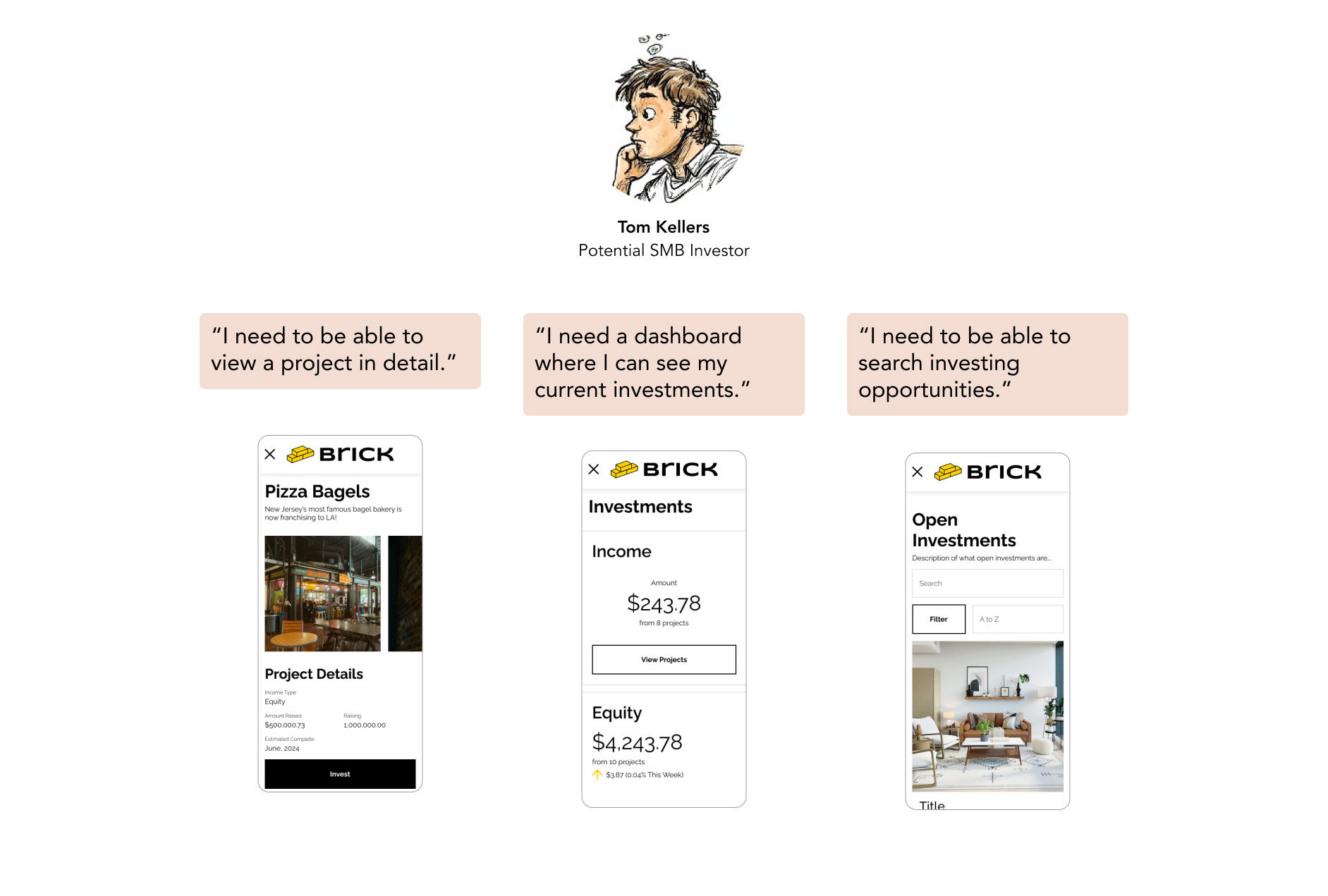
Desktop High Fidelity Designs
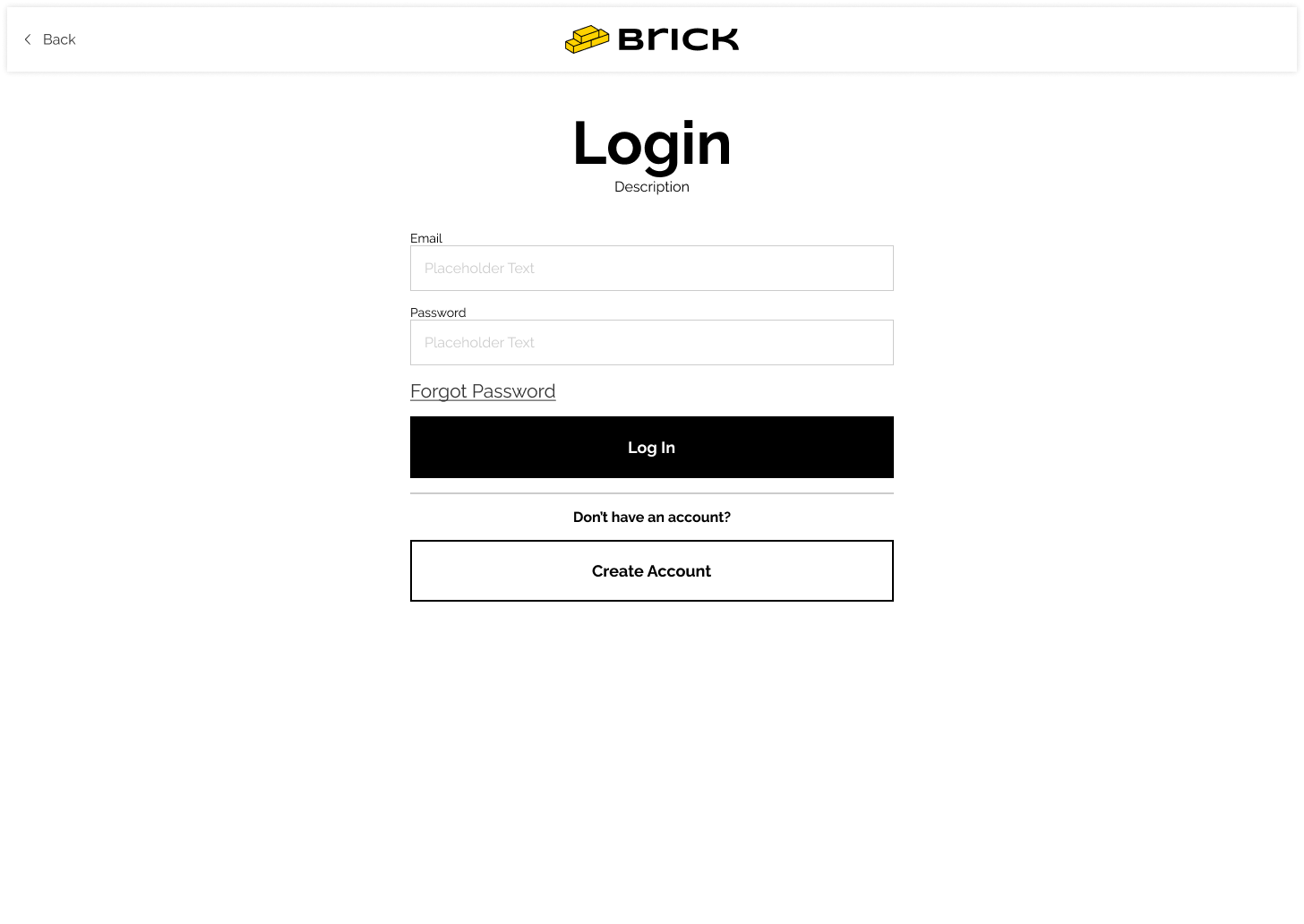
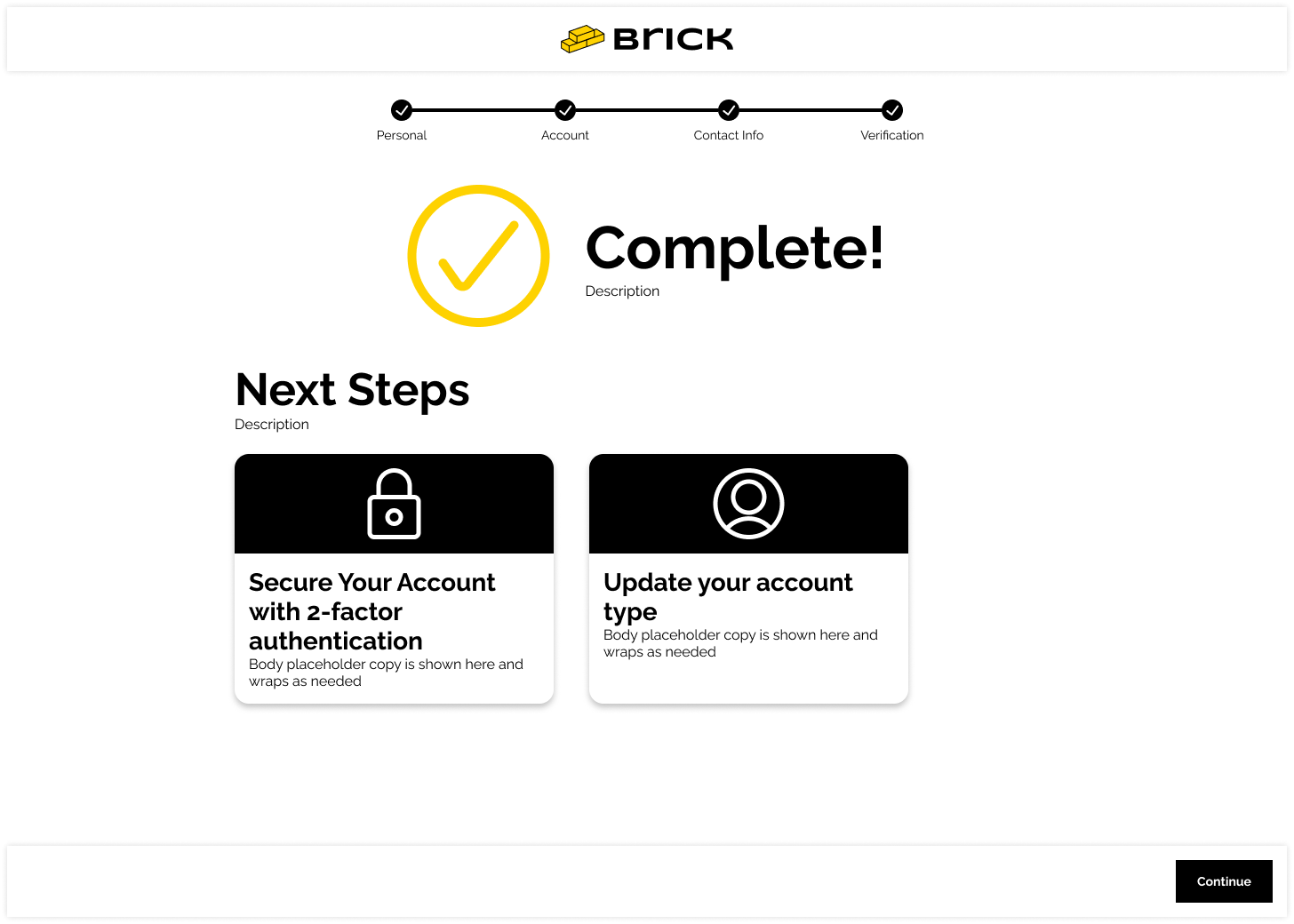
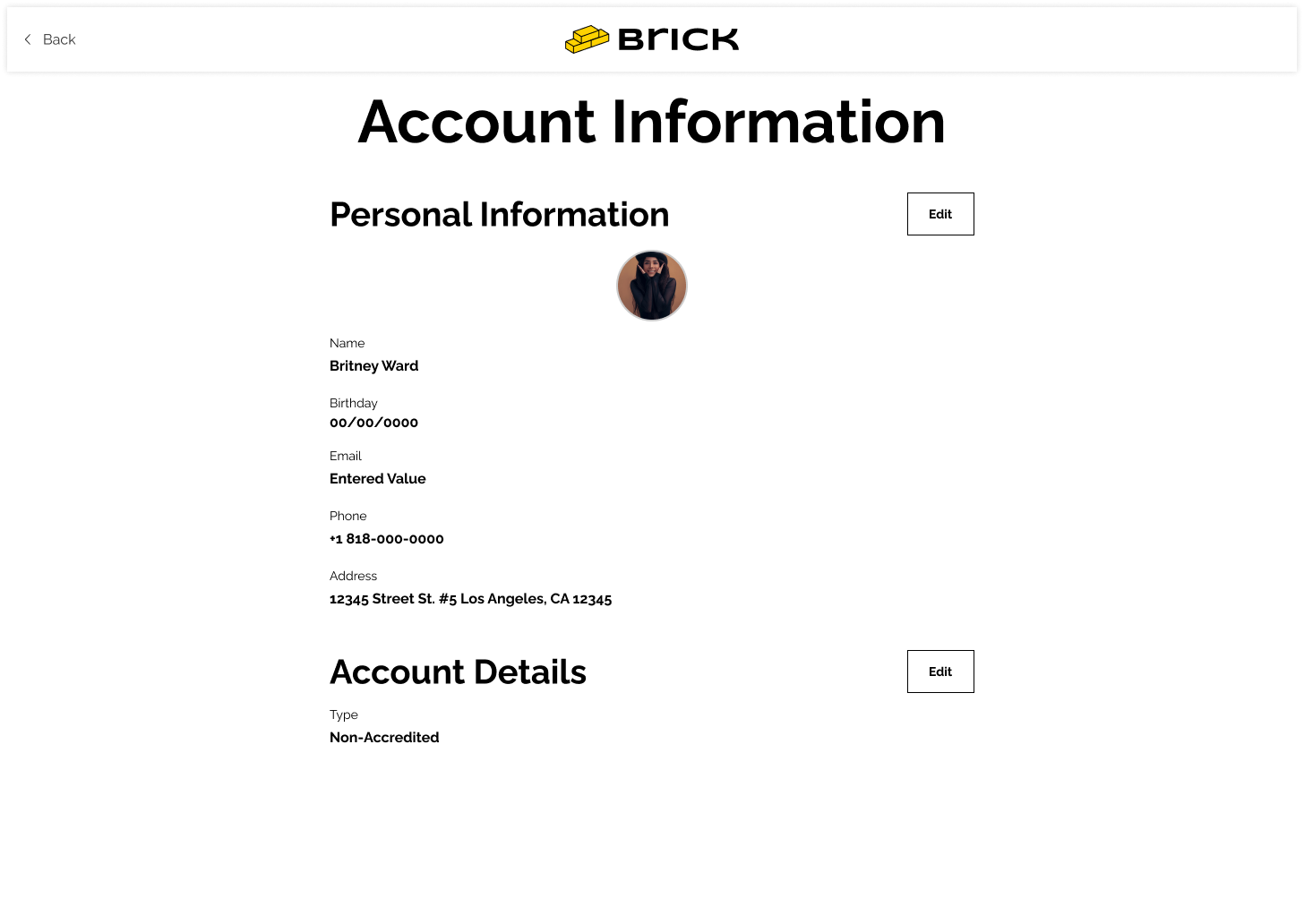

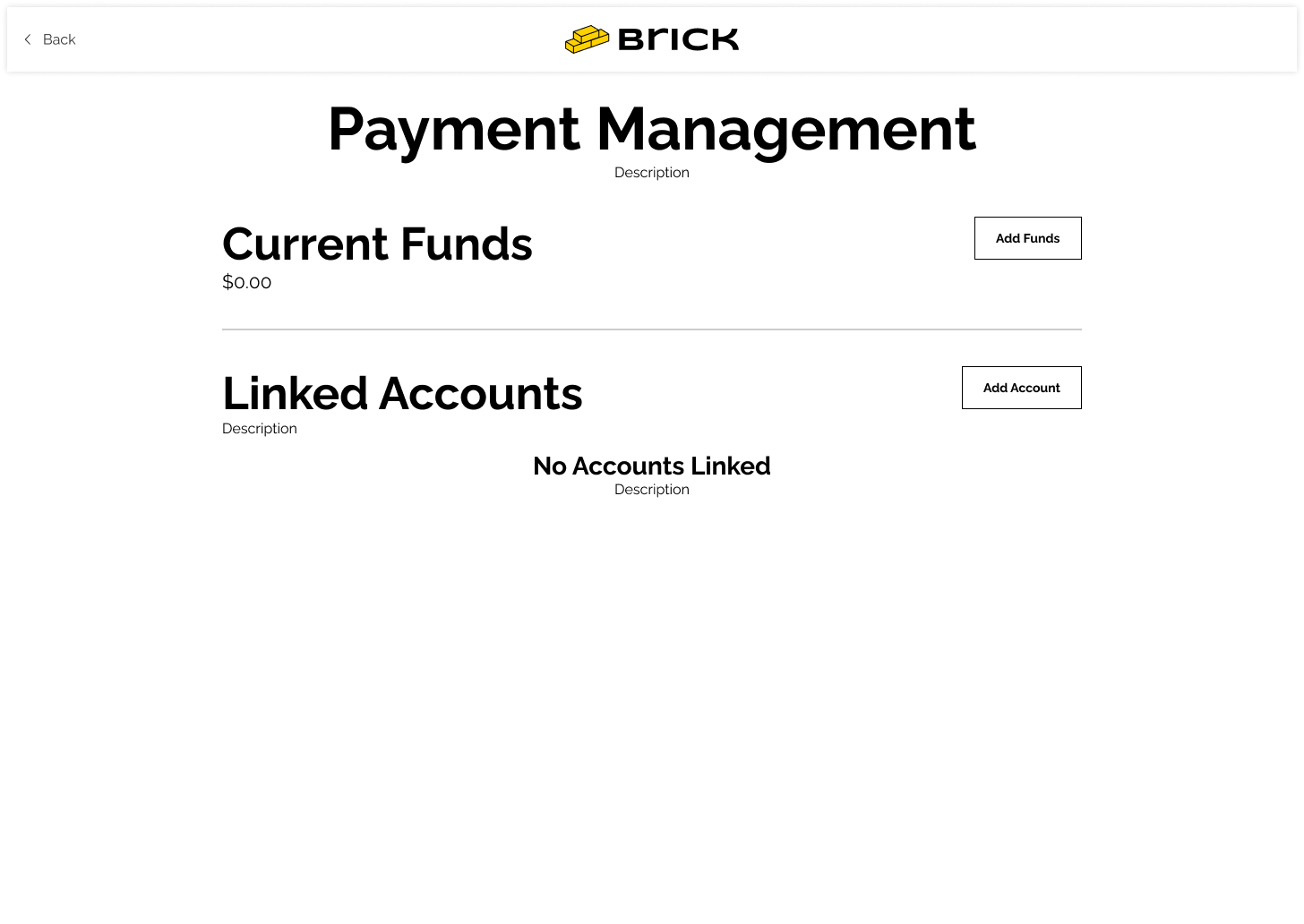
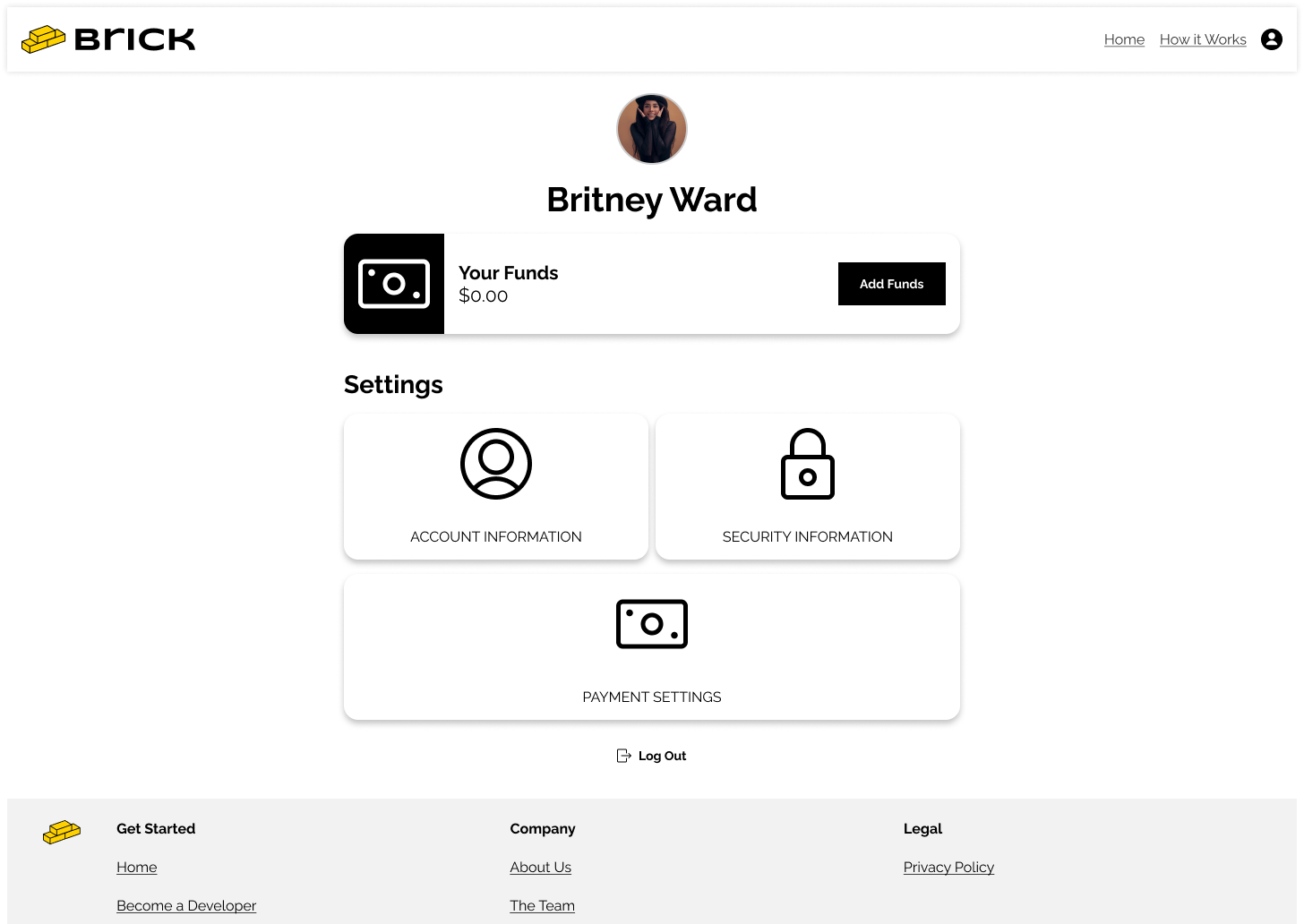

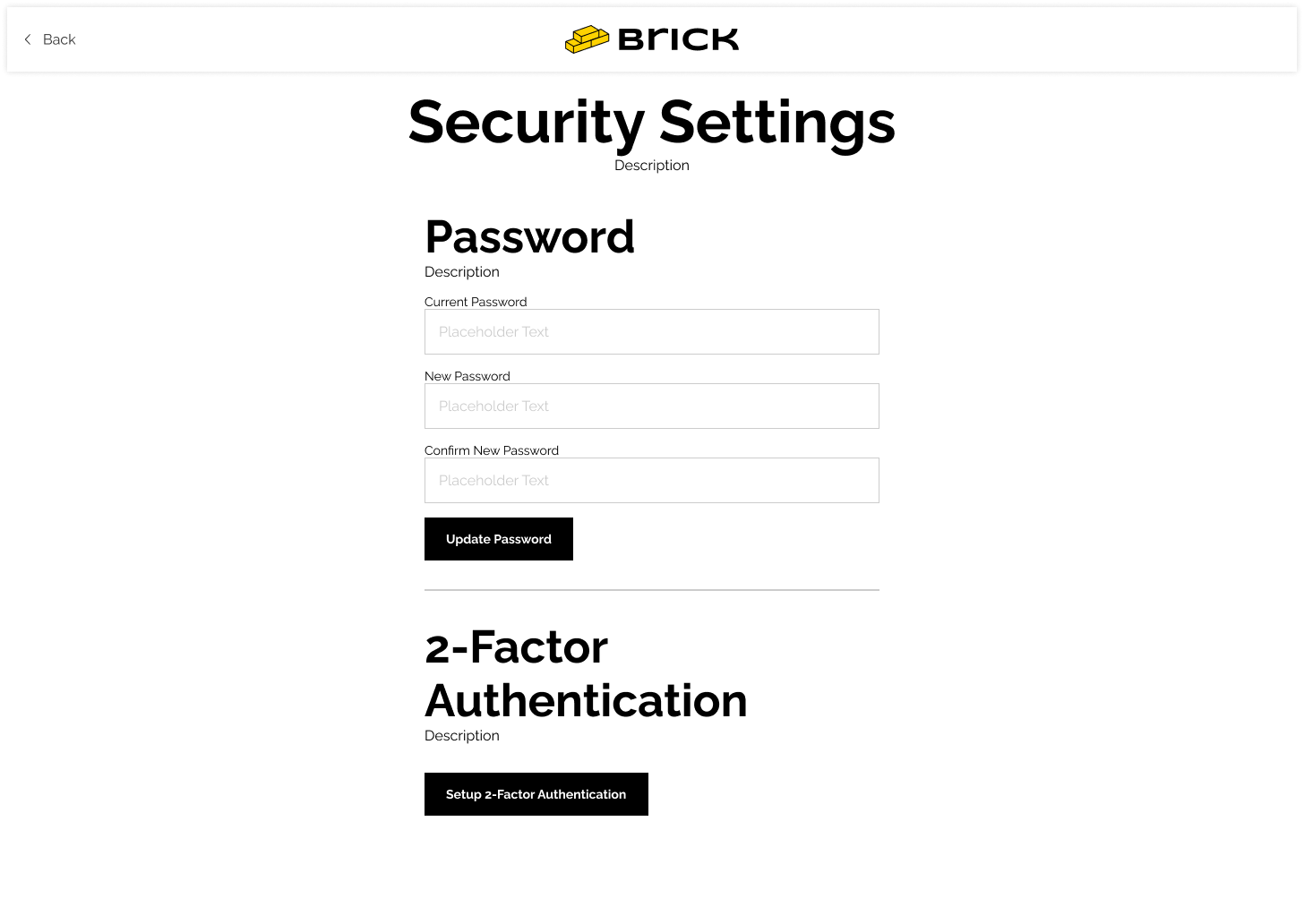
Step 5
What happened next
Unfortunately, we failed to secure enough investments to officially launch Brick. Investors that said they would shell out money suddenly went quite once the time came even though enthusiasm from users was high. A large reason for the lack of funds was our inability to present to them a large enough list of users that had pre-signed up for Brick and were ready to use it once the platform was built.
It's a brutal reminder of the fact that up to 90% of startups fail within their first five years.
Lessons Learned
My experience at Brick taught me
- The importance of being able to listen to one’s users and pivot
- How to wear many hats in a startup environment
Brick DeFi
Designing a fintech startup that enables aspiring business owners to crowdfund capital.
High Fidelity Mobile Designs









Project Summary
The problem
Aspiring small business owners have a very hard time raising enough capital to start their dream ventures. Most have to take large, risky loans from banks. We decided to make an alternative.
The product
Brick was a fintech startup that aimed to allow budding real estate developers to raise money to fund real estate projects via crowdfunding.
My role
UX/UI Designer
Our team
Lead Designer, UX/UI Designer, CEO, and CTO
Step 1
Establishing Proof of Concept
Brick’s initial plan was to crowdfund millions of dollars to buy a skyscraper in NYC and then share revenue from rent with the building’s investors.
I took this idea to potential users and solicited feedback.
Users were quick to point out that the idea was complex, impractical, and that it even reeked of a scam. However, users noted that the idea of raising money to buy real estate was interesting. A team member then said, "What about if we did this but for small businesses?"
We all had a kind of "eureka" moment, and I took this refined idea back to our users.
Bingo. This was an idea that our users said was practical, and I even got some potential investors to get pretty excited. This gave us the enthusiasm that we needed to move along.
Step 2
Research and Personas
It then came time for me to gain a thorough understanding of who our users were. This would enable us to understand which pain points we needed to address.
- I used surveys to understand our users at a broad level.
- I used focus groups and user interviews to understand our users at a more nuanced level and to dig into interesting findings.
This allowed me to make the following two personas.


Step 3
Building Information Architecture
Now that our proof of concept had been validated, and we knew who our users were, it became time for me to make a fully detailed Information Architecture that captured all of our requirements. This process technically began during Step 2 but was further excelerated after I completed user research. I built our Information Architecture by
- Conducting user interviews with potential users
- Holding design brainstorming sessions with the team
- Conducting competitive analysis and searching for inspiration
This allowed us to keep track of all of our requirements and outline a very clear plan for our product within a manageable scope.
Step 4
Wireframing in Figma
By this point I knew that our product had a place in the market, I knew who our users were, and I had a detailed outline for our product. Thus it came time to begin wireframing, and I was able to wireframe in rapid time because I had carefully maintained our requirements. I used our personas to make the following designs based upon their needs.
Some examples of how I used our personas to inform design decisions include;


Desktop High Fidelity Designs








Step 5
What happened next
Unfortunately, we failed to secure enough investments to officially launch Brick. Investors that said they would shell out money suddenly went quite once the time came even though enthusiasm from users was high. A large reason for the lack of funds was our inability to present to them a large enough list of users that had pre-signed up for Brick and were ready to use it once the platform was built.
It's a brutal reminder of the fact that up to 90% of startups fail within their first five years.
Lessons Learned
My experience at Brick taught me
- The importance of being able to listen to one’s users and pivot
- How to wear many hats in a startup environment
Brick DeFi
Designing a fintech startup that enables aspiring business owners to crowdfund capital.
High Fidelity Mobile Designs









Project Summary
The problem
Aspiring small business owners have a very hard time raising enough capital to start their dream ventures. Most have to take large, risky loans from banks. We decided to make an alternative.
The product
Brick was a fintech startup that aimed to allow budding real estate developers to raise money to fund real estate projects via crowdfunding.
My role
UX/UI Designer
Our team
Lead Designer, UX/UI Designer, CEO, and CTO
Step 1
Establishing Proof of Concept
Brick’s initial plan was to crowdfund millions of dollars to buy a skyscraper in NYC and then share revenue from rent with the building’s investors.
I took this idea to potential users and solicited feedback.
Users were quick to point out that the idea was complex, impractical, and that it even reeked of a scam. However, users noted that the idea of raising money to buy real estate was interesting. A team member then said, "What about if we did this but for small businesses?"
We all had a kind of "eureka" moment, and I took this refined idea back to our users.
Bingo. This was an idea that our users said was practical, and I even got some potential investors to get pretty excited. This gave us the enthusiasm that we needed to move along.
Step 2
Research and Personas
It then came time for me to gain a thorough understanding of who our users were. This would enable us to understand which pain points we needed to address.
- I used surveys to understand our users at a broad level.
- I used focus groups and user interviews to understand our users at a more nuanced level and to dig into interesting findings.
This allowed me to make the following two personas.


Step 3
Building Information Architecture
Now that our proof of concept had been validated, and we knew who our users were, it became time for me to make a fully detailed Information Architecture that captured all of our requirements. This process technically began during Step 2 but was further excelerated after I completed user research. I built our Information Architecture by
- Conducting user interviews with potential users
- Holding design brainstorming sessions with the team
- Conducting competitive analysis and searching for inspiration
This allowed us to keep track of all of our requirements and outline a very clear plan for our product within a manageable scope.
Step 4
Wireframing in Figma
By this point I knew that our product had a place in the market, I knew who our users were, and I had a detailed outline for our product. Thus it came time to begin wireframing, and I was able to wireframe in rapid time because I had carefully maintained our requirements. I used our personas to make the following designs based upon their needs.
Some examples of how I used our personas to inform design decisions include;


Desktop High Fidelity Designs








Step 5
What happened next
Unfortunately, we failed to secure enough investments to officially launch Brick. Investors that said they would shell out money suddenly went quite once the time came even though enthusiasm from users was high. A large reason for the lack of funds was our inability to present to them a large enough list of users that had pre-signed up for Brick and were ready to use it once the platform was built.
It's a brutal reminder of the fact that up to 90% of startups fail within their first five years.
Lessons Learned
My experience at Brick taught me
- The importance of being able to listen to one’s users and pivot
- How to wear many hats in a startup environment


